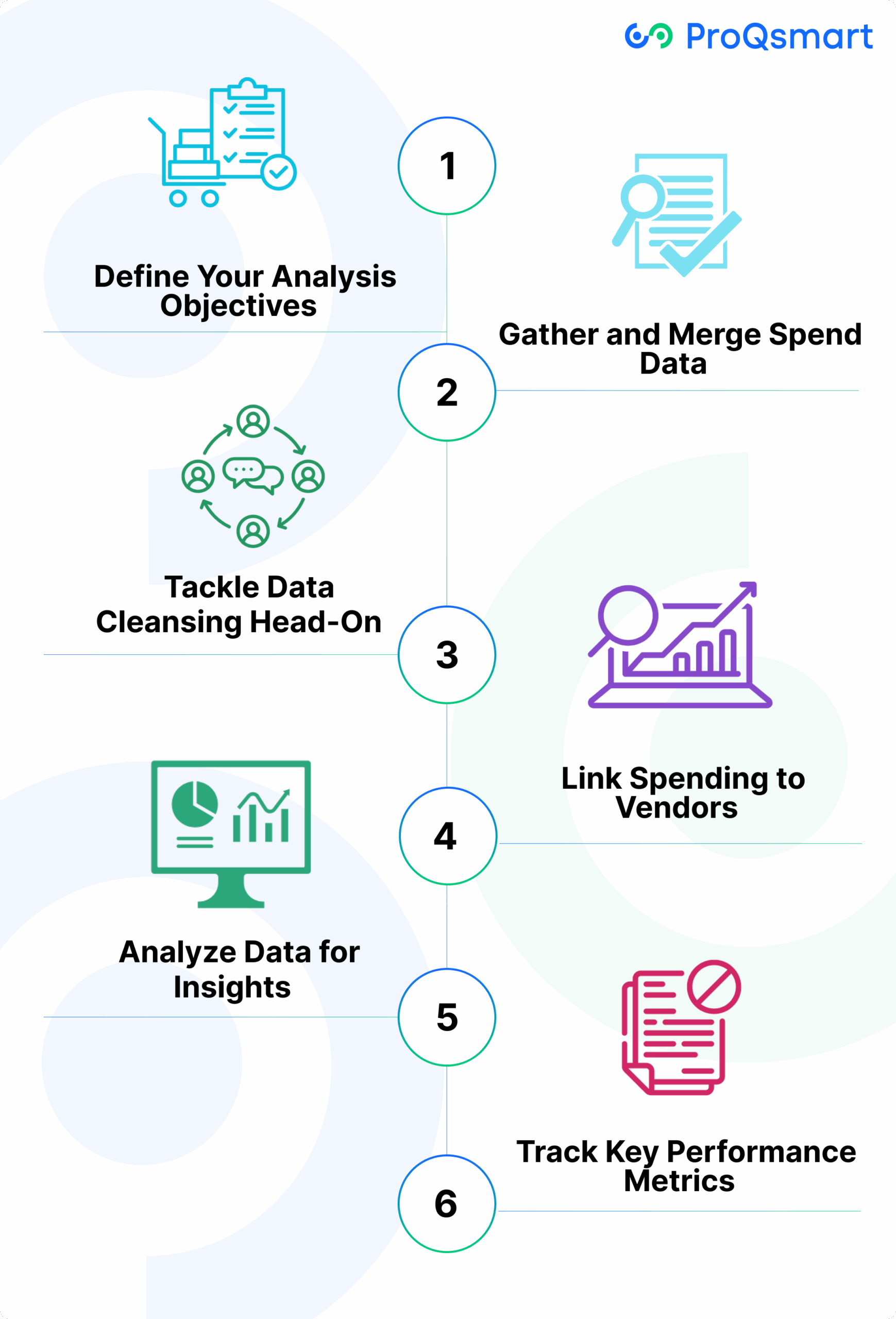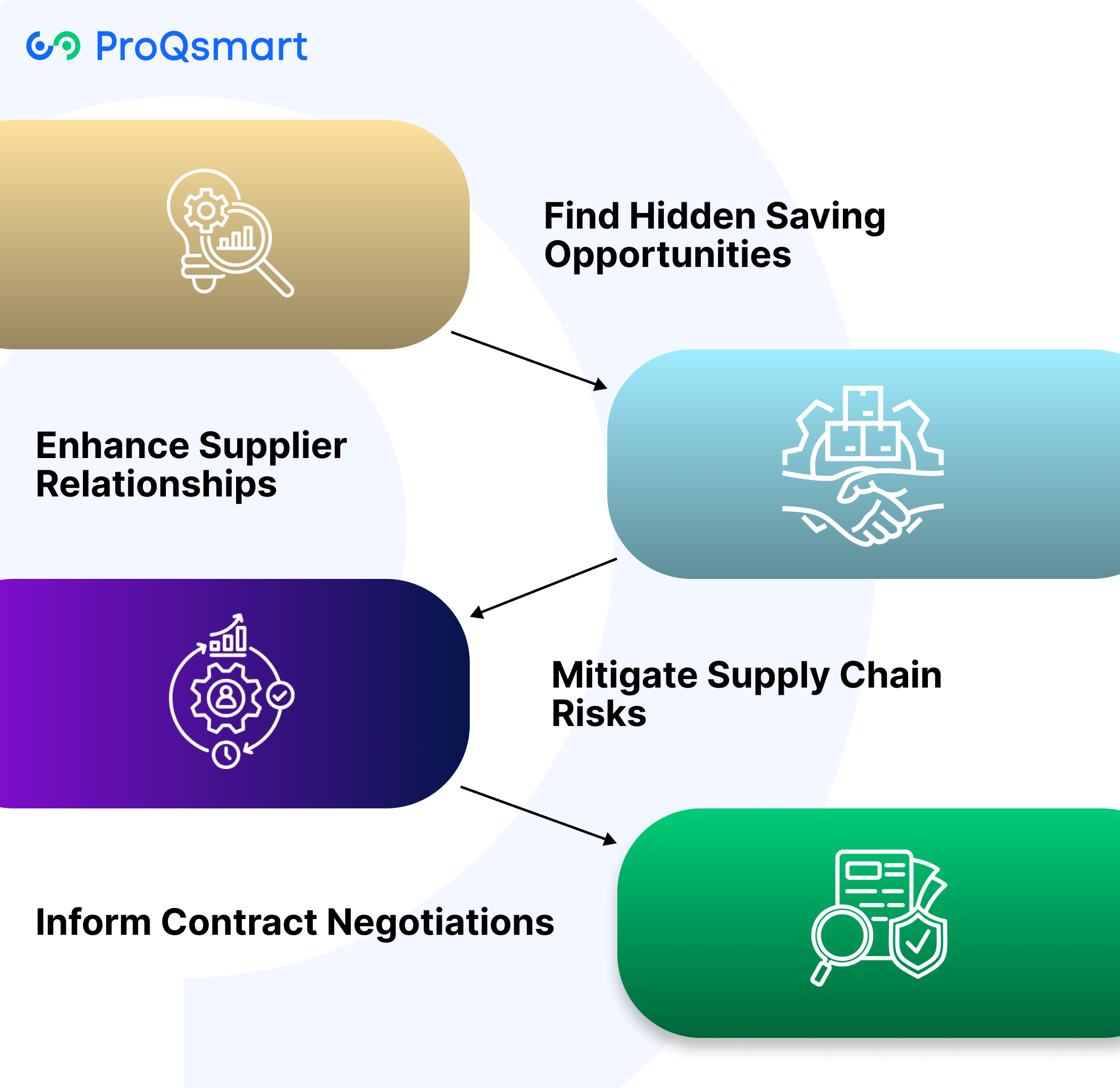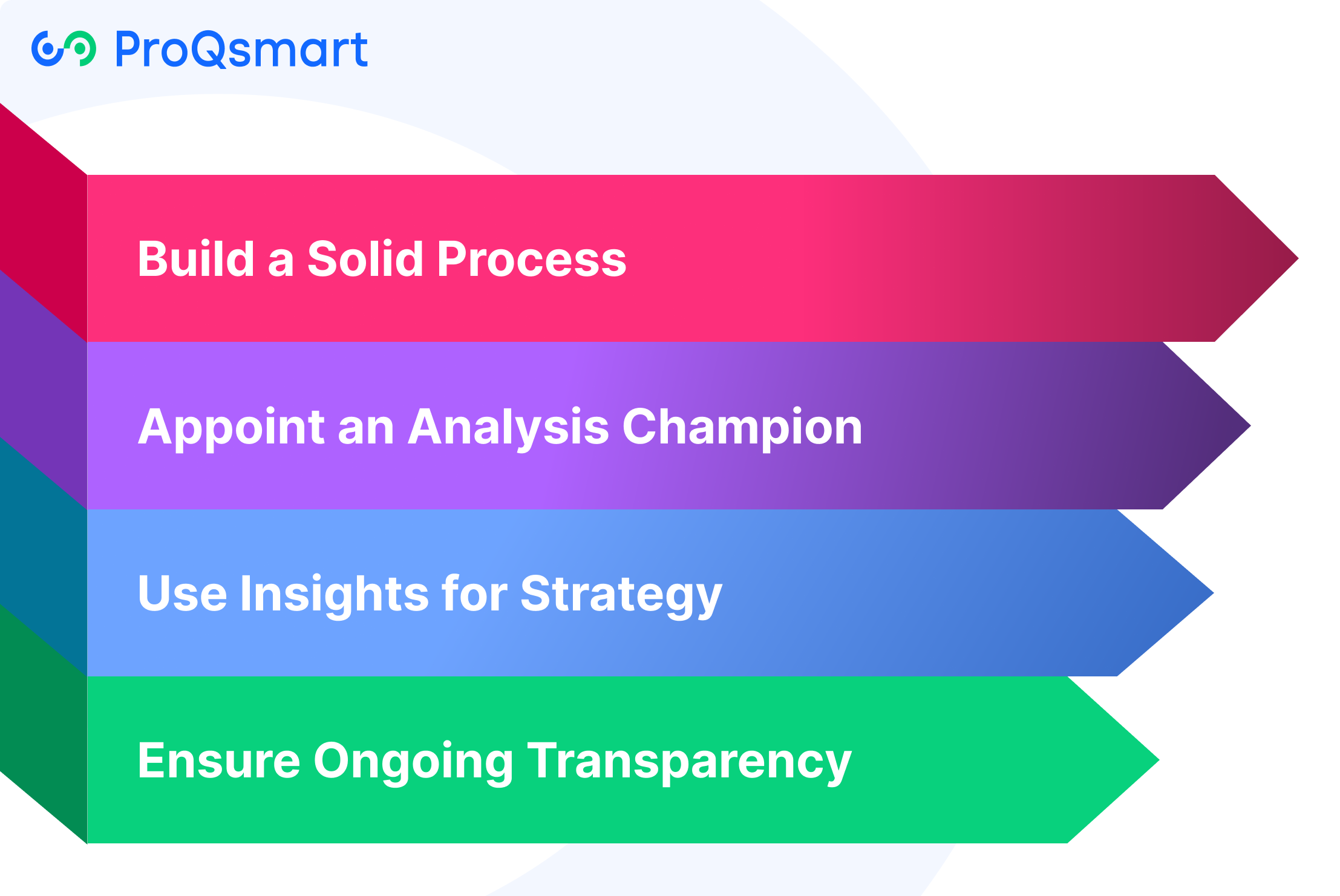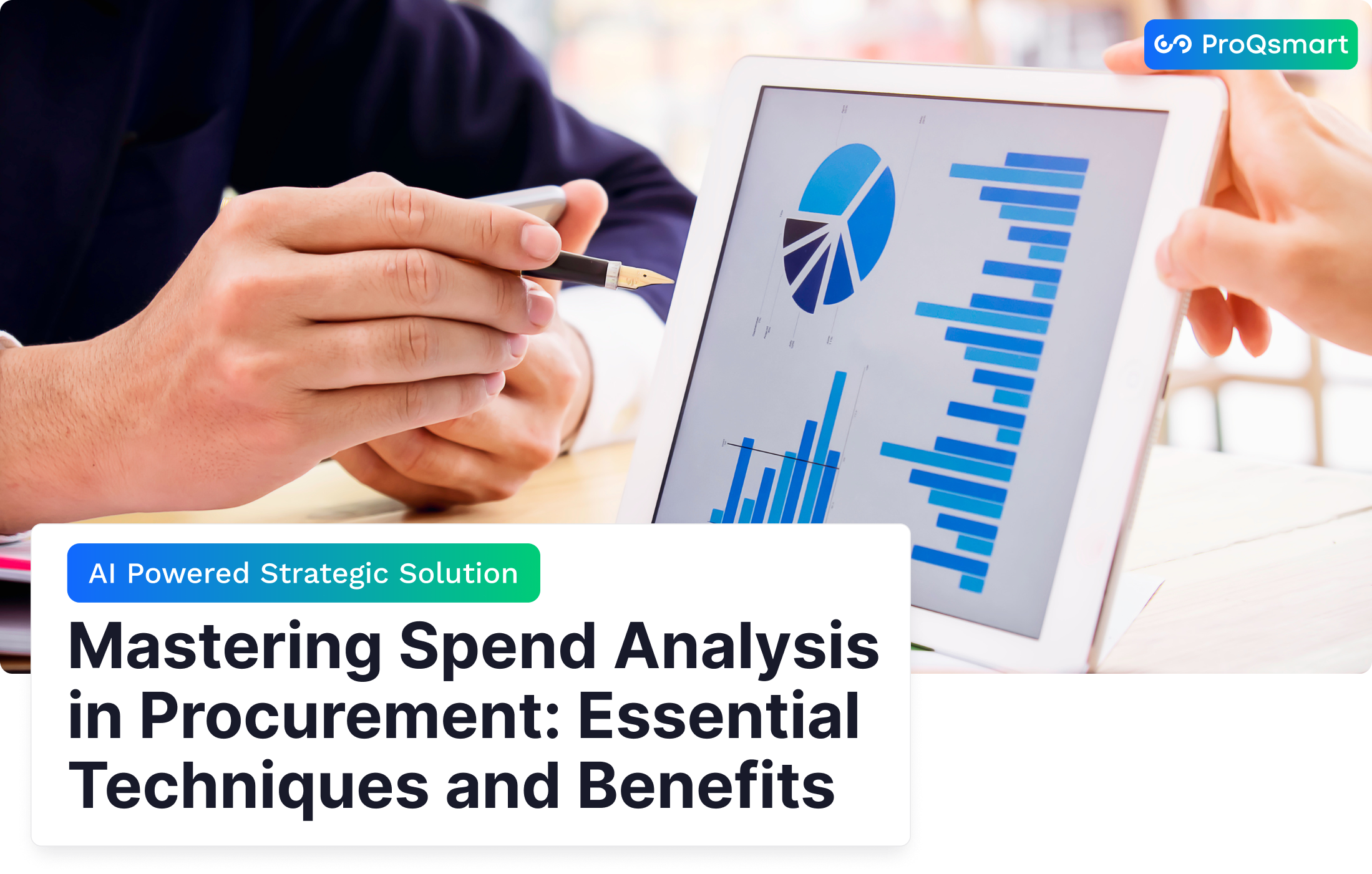Spend analysis in procurement equips teams with a comprehensive view of their spending. It shows where the money is spent, what the biggest suppliers are, and where you need the most oversight.
They audit for contract leaks and strive to develop healthy supply chains. Top companies are using data extracted from invoices, purchase orders, and payment records to identify trends and risks quickly. Realizing actionable insights, teams are too often left to their own devices with user-friendly dashboards and AI-based models that cluster spend into generic categories, not real line items.
For companies looking to reduce waste and increase supplier value, comprehensive spend analysis is indispensable. This article discusses some successful strategies that companies use to implement spend analysis, as well as best practices for achieving tangible results in your particular local market.
What Is Procurement Spend Analysis?
Procurement spend analysis means a business takes a deep look at what it buys, where its money goes, and who it buys from. We do a line by line, deep dive systematic analysis of all spending data. That usually means wading through thousands or even millions of rows to pinpoint opportunities for cost savings, increased efficiency, and stronger supplier relationships.
This process sets the stage for a vigorous, agile, and prosperous procurement ecosystem. It enables teams to get a better grip on their purchasing practices and exposes trends they would otherwise be unable to identify. For most complex manufacturers and larger firms, Excel stops being sufficient.
They begin to seek out more powerful tools and centralized databases in order to aggregate all of their spending data into one place for more convenient analysis. To conduct spend analysis, you have to break spend down by category, cost center, and supplier.
Mapping out where every single dollar is spent provides internal teams with insights on how to save money in innovative new ways. They can even eliminate avoidable waste and build supplier relationships. That’s why procurement spend analysis is so important to effective spend management.
How to Perform Spend Analysis in Procurement?

Spend analysis in procurement provides organizations with a data-driven view of their spending. It can provide visibility into where costs can be reduced, improve connections with suppliers and create more strategic sourcing.
Most teams follow four main steps: data collection, data cleansing, classification, and analysis. Every step is dependent on the previous one, but as new technology and improved tools have been developed, the process has become quicker and more precise.
This process requires you to leave no stone unturned. The tradeoff is that the process is certainly a tradeoff, and the reward is an efficient spend management system that aligns with industry standards.
1. Define Your Analysis Objectives
Each effective spend analysis begins with clear objectives. Your team should start by identifying the things you want to learn or change. Often the purpose is to save money.
Other times, it’s to check if suppliers are meeting their promises, or to make sure spending lines up with rules and company policies. With specific objectives defined, you’re able to frame every decision made in the process.
For example, if the objective is cost savings, the team will focus on identifying and eliminating redundant suppliers. They will be able to find contracts to be renegotiated. If compliance is the goal, they might want to identify out-of-policy purchases.
These targets must align with the organization’s broader goals, such as achieving sustainability targets or developing a more diverse supplier base.
2. Gather and Merge Spend Data
Spend data originates from a multitude of sources. This includes everything from invoices, purchase orders, credit card reports and/or contract-filed data from all business units.
Additional challenges include discovering data in various forms and formats, as each department will tend to maintain data in the manner it chooses. To understand the complete picture, all spend data needs to be gathered and combined.
The difficulty is modularly updating the data and maintaining confidence that the data are accurate and complete at this stage. Technology is now a key enabler.
Spend analysis software and AI spend analysis tools can automatically pull and combine files with greater accuracy and significantly less human error than hand-combing data. For instance, certain systems automatically tag supplier names, flag fields that are missing, and match spend items to the appropriate category.
Setting up naming conventions from the start is important. Adopt a commonly used name for each supplier to avoid confusion and be more efficient in the process down the line.
3. Tackle Data Cleansing Head-On
After all, clean data is at the heart of any good analysis. For the majority of data, spend is never completely clean—information is missing, entered incorrectly, or may even be a duplicate or incompatible record.
Cleansing involves addressing these problems before any fruitful analysis can begin. Teams create a consistent format by standardizing supplier names, correcting date formats, filling in missing data and weeding out duplicates.
Skipping this step may yield inaccurate results, resulting in ill-informed decisions. Data quality is the root of it all. Data quality impacts every possible outcome.
The process is more efficient when employing error-checking software. It automatically flags issues, eliminating the need for human intervention and increasing the accuracy.
4. Link Spending to Vendors
Once you’ve cleansed your information, the next part of the process is linking each dollar spent to the appropriate vendor. This isn’t as simple as going down a list of names.
It involves taking account of all spending with every vendor, how frequently you purchase from them, and what you are spending money on. By linking spending to vendors, organizations can identify vendor risk, monitor vendor performance, and discover opportunities to consolidate orders.
Supplier data powers the performance review process. Teams can quickly see which suppliers are the most timely, have the best terms, or need to be looked into more closely.
When spending data is accurate and complete, teams can identify trends and patterns to make informed decisions. They are better equipped to determine whom to retain, negotiate with, and seek alternative suppliers.
5. Analyze Data for Insights
Now that teams have clean, linked data, they can begin the analysis. They seek out patterns such as increasing prices, abrupt decreases in purchase orders, or spend movement from one supplier to another.
They might conduct variance analysis to identify outliers or benchmark spending against industry standards. Analysis tools, everything from simple Excel pivot tables to sophisticated spend analytics software, make it easier to identify these patterns quickly.
For example, the team might notice that spend with one of their most important suppliers has been trending up for the past three months. This means it’s a great time to consider renegotiating agreement terms.
Or, analytics might reveal excessive tail spend on many small suppliers, indicating an opportunity to consolidate. As with any analytical process, the objective should be to make numbers actionable.
6. Track Key Performance Metrics
Developing and tracking key performance indicators (KPIs) helps to ensure that the analysis remains focused. Too many teams track metrics such as cost savings, number of suppliers, contract compliance, and percent of spend under management.
Measuring the impact of these KPIs allows respective teams to understand what changes were successful and where improvement is still needed. Consistent reporting is key.
Scorecards on a monthly or quarterly basis ensure that your senior leaders stay informed and engaged with the process. Additionally, KPIs should always link back to overarching company goals to maximize their impact.
For example, if a goal is to save 10% on costs this year, the spend analysis needs to be forward-looking and help track those savings. This needs to happen as you renew contracts or change suppliers.
Uncover Deeper Procurement Insights

Uncovering deeper procurement insights comes from a sharp, focused, unwavering inspection of spend data. When organizations gather and study their spend, they spot patterns that show where money goes, what works well, and where things can get better.
This checklist-based process is not a one-and-done checklist. It requires a much more consistent, active touch—every month or every quarter—to respond to changing supply chains and emerging business priorities. Through the use of data analytics, organizations begin to understand not only how much they spend, but why and where they spend it.
This provides them with a solid foundation for each and every decision they make, enabling everything from budget setting through to supplier selection.
Find Hidden Saving Opportunities
Spend analysis allows procurement teams to identify spend that can easily fall through the cracks. Whether by supplier, category, time, or business unit, they help identify and eliminate maverick spending and off-contract purchases.
For example, a manufacturer might spot duplicate orders across plants or find that small, frequent buys with the same vendor cost more than a bulk contract. These insights allow them to better roll up orders or make a plan to shift to preferred suppliers, resulting in tangible savings.
Consistent and thorough analysis ensures these opportunities never slip through the cracks.
Enhance Supplier Relationships
When procurement teams are armed with current and accurate spend data, they negotiate with suppliers from an informed position. They might provide insights into where orders are disproportionately stacking up, the quality of orders is lagging, or lead times are slowing.
This creates space for candid conversations about service, price, or even collaborative process improvements. Healthy supplier relationships develop from this transparency.
Teams that are transparent with spend trends experience greater value and fewer surprises.
Mitigate Supply Chain Risks
With a transparent view of spend, teams can more easily identify if they’re overly-dependent on a single supplier or area. This allows them to respond proactively by adding replacement suppliers or rerouting orders, for example, to mitigate risk.
When spend analysis indicates that one supplier produces 60% of a key component, teams can get ahead of any potential disruption. This proactive approach helps them mitigate potential disruptions before they happen.
That constant flow of demand helps ensure that the supply chain remains healthy and robust.
Inform Contract Negotiations
Learn how spend analysis equips procurement teams with the data needed to negotiate better contract terms. They understand their historic spend, what it should be relative to market rates, and what terms are most important to them.
This enables them to negotiate for lower prices, more favorable terms, or stricter service levels. Bottom line— teams that leverage data during negotiations are getting better deals.
Navigating Spend Analysis Challenges
Spend analysis is not an easy endeavor. Procurement teams encounter hurdles that impede forward motion and increase exposure. These challenges are often exacerbated by unreliability in processes, data inconsistencies, and tools that are not equipped to handle large data sets.
Oftentimes gaps in spend data—including the use of varying supplier names or suppliers in regional formats—create barriers that lead to the inability to obtain concrete answers. Truth is, many companies are still working in Excel. These tools fail when dealing with millions of rows, preventing teams from digging deep into the data.
Without a clear trail of approvals and purchasing, maverick spend and leakage to non-preferred vendors can easily occur. These problems threaten not only spend visibility but effective cost control.
Overcoming Poor Data Quality
A successful spend analysis begins with clean data that can be trusted. Data quality is a challenge. Teams are personally familiar with the errors—misspelled supplier names, missing UNSPSC codes, and mismatched categories.
Addressing these requires strong data governance. Establish conventions for nomenclature, data formats, and classification. Perform regular audits on approved supplier lists and transaction histories.
Implement a process to frequently check for any data gaps or duplicates. Include automated checks wherever you can. Tools like ProQsmart have been life-saving in automating purchase order creation, punchout catalog updates, and invoice review processes.
Each of these measures iron out inconsistencies and improve data quality, ensuring all of your spend is prepared for robust analysis.
Aligning with Business Goals
Spend analysis is always more effective when it aligns with the business’s overall objectives. Connect analysis efforts to high level business objectives such as cost control, risk mitigation, or ESG goals.
Apply spend data to inform supplier selection decisions and investments in capital. Frequent status meetings between procurement and company leadership keep goals in sync.
Smart tools that integrate budget tracking and compliance support — like ProQsmart — further identify this alignment and streamline the process of managing it.
Best Practices for Top Results

A solid spend analysis provides procurement teams with the data they need to make informed decisions, save budget dollars, and reduce risk. In custom manufacturing, where each dollar and decision counts, proven best practices help teams stay one step ahead of the competition in a rapidly evolving industry.
Creating a transparent process, supporting those who drive the analysis forward, applying new understanding, and making work available to everyone are critical first steps.
Build a Solid Process
A defined process allows spend analysis to be repeatable and refined. Teams begin with an exercise to understand where all their procurement and spend data is located—ERP systems, invoice systems, supplier files.
It helps to pull in third-party data, such as market rates, to provide additional context. Next, teams set up a spend taxonomy: three to six levels deep, with main buckets like raw materials, subassemblies, or toolings, then breaking each down by cost center and supplier.
Each process—data clean-up, sorting, and reporting—becomes a highly documented chain, ensuring everyone is always on the same page. Automated tools, such as ProQsmart, increase precision by processing large data volumes and organizing categories.
Quarterly reviews ensure that teams can address any gaps or adjust the workflow as needs evolve.
Appoint an Analysis Champion
Appointing a spend analysis champion is crucial. Having someone responsible ensures that the analysis doesn’t get lost in the shuffle. This person is responsible for ensuring the project stays focused, ensuring buy-in from the team, and serving as the point person for any questions.
With a courageous leader supporting them, the champion could be empowered to advocate for improved tools or additional training. Access to ongoing support—be it new software, workshops, or other forms of assistance—helps sharpen skills and the resulting product.
Use Insights for Strategy
Spend analysis discoveries inform actual procurement strategies. Teams apply what they learn to identify high-cost areas, develop supplier negotiation strategies, or even re-imagine sourcing strategies for specific components.
Real-time dashboards from platforms like ProQsmart let teams slice data by category or supplier, then tie it straight to budget goals. As teams make reviews a part of each planning cycle, quick pivots become much easier.
Ensure Ongoing Transparency
Consistent and open reporting helps build trust and accountability among departments. To build trust, teams should commit to sharing the analysis results in easily-understood dashboards, monthly briefs, or even with regular live meetings.
ProQsmart’s automated reporting provides real-time transparency to all stakeholders on savings realized, supplier scorecards, and compliance. Consistent communication fosters understanding, strengthens collaboration, and identifies additional opportunities for cost savings.
Using Tools for Better Analysis
Using the best tools available for spend analysis is a game changer. Spend analytics software such as ProQsmart provides procurement teams with the tools to accurately monitor their organization’s spending. It has enabled them to show save trends and find potential savings that a manual review would overlook.
The most effective tools come equipped with out-of-the-box dashboards, real-time data refresh capabilities, and easy to understand, interactive graphics. Though Excel can still accomplish the basics, it just doesn’t have these cutting-edge features. Many organizations now use business intelligence (BI) tools for data visualization, which was once hard to do but is now standard practice.
The importance of spend management software emerges as a key driver of spend analysis success. When implemented well, robust spend analysis tools provide much more than a pretty dashboard. They can automate all data cleansing, sorting and reporting processes, reducing manual labor and human error.
The right tool will have intuitive dashboards for a seamless user experience. It should embed robust data governance controls along with flexible data slicing and dicing capabilities to cater to each team’s specific needs. Spend analysis platforms may not have the same level of flexibility as Excel or a BI tool.
It’s their specific, personalized attributes that make it quick to do so, and allow teams to cut up to 11% from their annual budget.
How Technology Boosts Accuracy
AI-powered solutions today help increase the accuracy of spend data collection by automating data collection and entry. Tools that implement automated data cleansing and classification, such as ProQsmart, reduce human error and ensure up-to-date information. Automated, real-time dashboards and reporting help everyone keep the data current and digestible.
Continual testing of these solutions ensures that they remain effective and safe for use over extended periods.
Streamline Analysis with Solutions (like ProQsmart)
Innovative solutions like ProQsmart transform how teams analyze spend data, enhancing the spend analysis process. ProQsmart’s AI-driven features take care of e-tenders, monitor budget compliance, document supplier performance, and automate workflows, leading to improved supplier performance and significant cost savings.
Conclusion
Spend analysis empowers procurement teams to sharpen their competitive advantage by identifying waste, uncovering unusual purchases, and driving cost-reducing negotiations. By thoroughly examining spend data, teams engage in more informed supplier discussions and improve overall supply chain health. With the right technology and consistent focus, procurement professionals can achieve significant savings and build stronger partnerships. For example, one team identified off-contract spending that was draining their budget, corrected it, and saved millions while strengthening supplier trust.
Harness the power of spend analysis to transform your procurement outcomes. Explore how ProQsmart’s AI-driven platform can provide real-time insights, automate workflows, and help you achieve measurable cost savings. Schedule a demo today to see how ProQsmart can elevate your procurement strategy.




